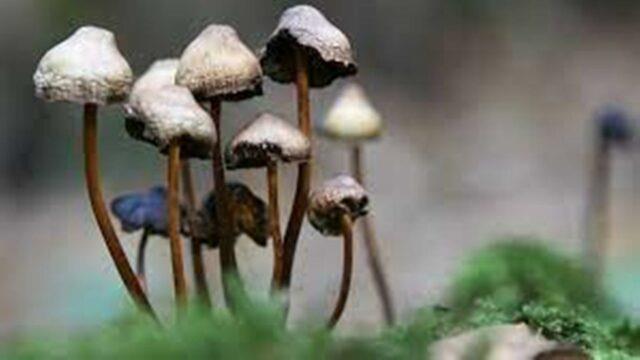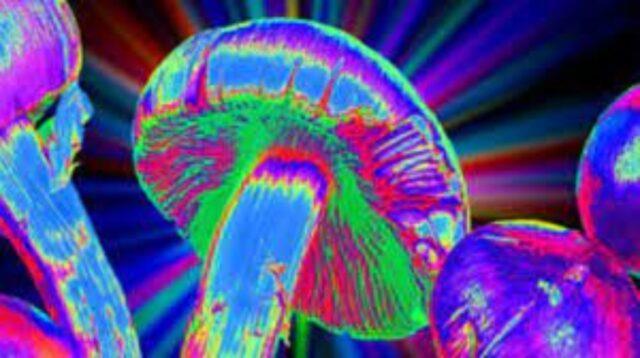(MENAFN- The Costa Rica News) By TCRN STAFF September 23, 2021 44 0 Share facebook twitter WhatsApp Linkedin Email
Must Read
health TCRN STAFF - September 22, 2021Where Do Magic Mushrooms Grow? Environment TCRN STAFF - September 23, 2021Costa Rica is a Finalist in the Prestigious Environmental Award Created by Prince William Environment TCRN STAFF - September 22, 2021Costa Rica Sets An Example For The World By Eliminating Trawling Technique

report this adTCRN STAFF Creating a Conscious alternative news network that we feel the world needs. Pura Vida!
Mushroom hunting is an ancient practice. Even today in urban areas people are often seen searching for these select edibles. Being able to recognize odors in the air, or knowing the correct time of year or the number of cool dewy mornings required for a fresh mushroom outbreak to naturally occur;
All of this contributes to the wisdom passed down from generation to generation on how to look for mushrooms. And with it came the myths, the rules of etiquette and, most importantly, a sense of wonder and mystery. Sometimes the mystery is not about whether you will find magic mushrooms, but whether they will find you.
TIP: Get our latest content by joining our newsletter . Don't miss out on news that matter in Costa Rica. Click here .
READ MORE: “Magic Mushrooms”: Psychedelic Effects To Treat Mental Health?

Mushrooms grow in a variety of climates and habitats. Mushroom hunting can be a rewarding and satisfying adventure, a time to meditate on your own, or share a fun day with friends. The advantage is being able to go home with a backpack or a basket of fresh magic mushrooms.
You might be thinking, “I'm new to the mushroom world and I don't know where to start.” Or “I used to collect mushrooms in my old city, but I moved and I don't know the local species.” So you may be looki ng for advice on where mushrooms grow.
If you live in a big city, most of the magic mushrooms you have access to were likely grown indoors or under artificial conditions. They may have had names like B +, Penis Envy, Golden Teacher, etc. A key aspect of mushroom growing is knowing where mushrooms grow naturally, reproducing the climate they like and mimicking the substrate (their food source) in which they grow.
Psilocybe cubensis (psilocybin mushrooms), for example, are easy to grow because it is easy to create an artificially warm and humid environment. Additionally, the substrate that supplies your nutrient needs can be made from ingredients that can be purchased at any local supermarket. However, many species are difficult to grow because they need difficult-to-reproduce environmental triggers such as exceptionally cold weather or the presence of microbes in the soil to trigger their fruiting cycle.
The culture of magic mushroom hunting There is a vibrant culture around magic mushroom hunting. During the '60s and' 70s, resourceful students and mushroom hunters realized that they didn't have to travel to Mexico to find psilocybin, but rather magic mushrooms grew in their own countries. Growing knowledge about where to find P. cubensis or P. semilanceata led increasing numbers of young counterculture men to roam the grasslands and pastures of North America , the UK and Australia, heads down looking for magic mushrooms .

Contemporary magic mushroom hunters are counting on their smartphones. So they have quick access to Facebook ID groups or the Shroomery ID sub-forum, as well as perhaps a copy of their local field guide in their backpack.
There are some general rules of thumb when it comes to asking for information on some websites and Facebook groups. These include not asking for locations, in part due to the traditional secret that mushroom hunters (and their families) have their unique places. Some forums don't even allow people to ask to be shown places.
Many psilocybin mushrooms, particularly wood-loving species, can resemble any number of other small brown mushrooms, some of which are deadly. Therefore, it is essential to know not only the species you are looking for, but also the poisonous species (including those that look alike) in your region.
READ MORE: The Diamond Of The Forest; Chaga Mushroom
Where do magic mushrooms grow? Climate and habitat Some good places to start looking are cattle pastures on hot, humid summer days; tropical cloud forests; the fields and meadows on cool, damp autumn mornings; or among the woody debris at the edges of forests . Where and when mushrooms grow depends on the local climate and available habitats.
The eastern half of the United States consists of two broad climatic regions that can be divided into humid continental and humid subtropical. The range of P. cubensis in the United States fits perfectly within the humid southeastern subtropical part of the continent, from Florida and along the Gulf Coast. There, this fungus grows practically all year round on“cow cakes”.
In contrast, the western half of the continent has arid and semi-arid climates, and the western coast is classified as Mediterranean and oceanic. The west coast is known to lovers of fruitful autumn wood: P. azurescens, P. cyanescens, and P. allenii grow there, requiring cool nights and dewy mornings. Arid and semi-arid regions generally have few Psilocybe species. A large part of Europe (including the UK), southeastern Australia, and New Zealand are also classified as oceanic. There the predominant species tend to be fall wood loving species.
Mushrooms grow in a variety of habitats, and magic mushrooms are most commonly found in manure deposits, grasslands, forests, gardens, and disturbed areas. P. cubensis and Panaeolus cyanescens are well-known manure-loving species. P. semilanceata grows on grasses, but is saprophytic and grows on decaying grass. Forest lovers like P. azurescens, P. cyanescens, and P. subaeruginosa, although native to the edges of forests, have happily spread to gardens.

Psilocybe: a global genus Fungi of the genus Psilocybe are found on all continents except Antarctica. Of these we find a lot both in Europe and in the Americas. Psilocybe species are distributed in tropical, subtropical and temperate climates, with a great variety of species in Latin America. Our knowledge of the distribution of many species may reflect the broader social interest by country and levels of commitment to understanding their ecology.
Some species like P. cubensis, Panaeolus cyanescens and, to a lesser extent, P. semilanceata, have become truly global. This is because they have been introduced to many continents through the breeding of different varieties of livestock. Although the holotype was collected in Cuba, Psilocybe cubensis is not native to America, but an introduced species from India. It typically grows on cattle manure, but it is also known to grow on horse and elephant manure.
P. semilanceata grows throughout Europe, bears fruit in the fall and spring, and can also be found in temperate North America, Canada, and Tasmania. It has a rich history in European culture (including European mythology).
Tropical and subtropical species include P. cubensis, P. tampanensis (“Magic Truffles”,“Philosopher's Stone”), Panaeolus cyanescens (“Blue Meanies”), also known as Copelandia cyanescens, P. caerulescens (“Landslide Mushrooms”,” Derrumbes”), and P. mexicana (“ Teonanacatl”,“ Pajaritos”), who is well known for the fiction of Carlos Casteneda Enseñanzas de Don Juan.
Among the best known temperate species are P. semilanceata (“Liberty caps”), P. ovoideocystidiata, Psilocybe caerulipes (“Blue Foot Mushroom”) and Australian P. alutacea (“Poo Meanie”). Powerful wood lovers, P. azurescens (“Flying saucers”), P. cyanescens (“Wavy caps”), P. subaeruginosa (“Sub”), P. allenii, and P. stuntzii (“Blue Ringer Mushroom” ,“Stuntz's Blue Legs”), which being temperate species are also favored by an oceanic climate .
There are a variety of citizen science projects that are accessible to the public with the intention of mapping all known fungi. Resources like the Mushroom Observer, iNaturalist, and GBIF (Global Biodiversity Information Facility) track fungi for research purposes. These sites can be a useful resource for identifying species in your region. Keep in mind that most sites are unclear, providing clues rather than specific locations.
Do magic mushrooms grow in poop? Do they grow on wood? The main body of the fungus is the mycelium; lives underground within the substrate. The fungus itself is the reproductive part of the fungus. It expels its spores (similar to seeds) into the air for dispersal.
Fungi feed mainly from the inside out; they excrete enzymes (they drool over everything!) into their environment to digest what is around them. Depending on the species of magic mushrooms, some enzymes can only break down simple compounds. Others, however, can break down more complex compounds such as lignins found within wood.
In general, there are three types of magic mushrooms: those that grow on wood or plant materials (saprophytic mushrooms); those that grow in animal manure (coprophilic fungi); and those that grow on well decomposed plant matter that is almost earth (humus). To clarify a detail about poop lovers: the feces of herbivores, like those of cows, contain grass and other plant matter. These have already gone through a long digestive process, leaving a very simple cellulose substrate.
Searching for P. cubensis is a relatively straightforward process; they are a large mushroom, and are visible from a distance. The hard part, as many experienced foragers attest, is finding and collecting them before anyone else. On the other hand, P. semilanceata can be a challenge, especially since there are many similar ones that grow in the same area, such as the inactive Panaeolus, Mycena or other similar ones in sight. Because they grow from decaying grasses, they can be difficult to spot unless their caps are raised above the level of the grass .
Powerful wood lovers, P. cyanescens (North America, Europe), P. subaeruginosa (Australia, New Zealand), P. azurescens, P. allenii (West Coast of the USA) can grow in a variety of different types of wood. These psilocybin mushrooms are found more on the edges of forests, or on trails. You can often find their spores hitchhiking or on the boots and clothing of mushroom hunters . They also tend to be adventitious; They are known to have leapt from the wild into urban gardens, growing in wood mulches in temperate climates.
If you are hunting on private land, be aware of the risks you can take. Essentially, jumping a fence without permission is trespassing: All experienced prospectors (including me) will have their story of jumping a fence only to run into the landowner. Consider knocking on the farmer's door for permission with a bottle of wine or a pack of beers. They will probably know what you are looking for, and they will appreciate the courtesy . Lx Proprietarix can even offer you some useful tips; But there is nothing worse than jumping over the fence to face a raging bull!
With regards to etiquette Common informal rules include not taking the pins (the baby mushrooms that have not fully grown), and only picking up what you reasonably feel you are going to wear, leaving some for others. There are also debates about whether the fungus should be cut at the base of the stem or if the entire body of the fruit should be removed. Although there is research that shows that one is not better than the other, my opinion is that the entire fungus must be removed very gently without disturbing the mycelium.
Hunting any mushroom can be a rewarding experience, particularly in the case of magic mushrooms . Doing so contributes to your staging, and a sense of connection to the experience. Best of luck mushroom hunting!

MENAFN23092021000216011060ID1102853682